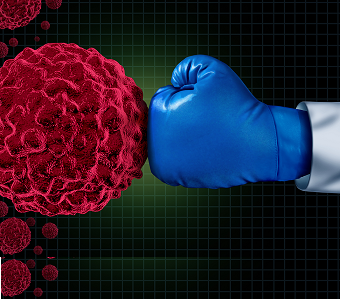AVEO has lost more than 90% of its market valuation in the last 21 months; another of PropThink’s “Drugs that Disappointed in 2013.”
In February, AVEO Pharmaceuticals (AVEO) announced that Japanese drug maker Astellas Pharma (ALPMY) terminated its three-year collaboration for tivozanib, putting to bed the long-troubled, oral VEGF receptor tyrosine kinase inhibitor (TKI) that once held promise for the treatment of renal cell carcinoma, breast cancer, and colorectal cancer. Unfortunately, given the common stock sells at a steep 37% discount to net liquidity of $1.92 per share, investors remain unconvinced the nightmare is over.
Despite having lost more than 90% of its market valuation in the last 21 months, AVEO management believes it can drive shareholder creation by moving forward with other early-stage, oncology assets, principally by securing partnerships after providing proof-of-concept data.
With contractual obligations (debt and operating leases) totaling a manageable $21.6 million this year, the expected annual cash burn of $50 – $55 million should enable the company to execute on forwarding its viability studies through mid-2015 before needing to raise additional working capital.
Though attractive commercial opportunities do exist, even in highly competitive markets, for targeted cancer therapies, we question this management team’s ability to develop their putative “first-in-class clinical assets” following the tivozanib debacle last year.
- AV-203 is a TKI that blocks ErbB3 receptors, one sub-receptor type in a family of proteins known to be overexpressed in a plethora of epidermal growth factor receptor (EGFR) tumor types, including NSCLC, breast, renal, colorectal, pancreatic and ovarian.
Roche’s (RHHBY) Herceptin (an erbB2 blocker, the mAb called trastuzumab) was the first such agent to be approved and is indicated for treatment of breast cancer.
Though AVEO completed a phase 1 dose escalation study of AV-203 that identified a go-forward dose of 20mg/kg, further development to identify a specific biomarker has been put on hold pending a partnership agreement: Biogen Idec (BIIB) terminated a five-year development deal in March (don’t infer too much from this collapsed deal, as BIIB’s pipeline assets are principally focused on immunology, such as multiple sclerosis and rheumatoid arthritis). Nonetheless, as a variety of other agents targeting various sub-receptor types are either in late-stage development or are now approved, such as the reversible ErbB1 inhibitors Tarceva (erlotinib) and Iressa (gefitinib) being sold by Roche/ Astellas and AstraZeneca (AZN), respectively, the prospects for AV-203 are suspect.
- AV-380 is an immunoglobulin G1 inhibitory monoclonal antibody thought to target key underlying mechanisms associated with cancer cachexia. AVEO is focusing on the plasma growth differentiating factor-15 (GDF-15), one of several inflammatory markers (including IL-6, IL-8) that are associated with weight loss, decreased muscle mass and strength and poor survival in many advanced cancer patients. Proof-of-concept data suggest that GDF-15 may serve as a prognostic indicator in cancer patients and be a novel therapeutic target for cachexia cancer syndrome (CACS) and even anorexia.
CACS is thought to affect more than 1 million cancer patients in North America and Europe, with the market exceeding $1 billion in annual sales. With no FDA-approved products for the CACS, a number of companies are actively pursuing treatment options, including: (PIFR) Proteolysis-Induction Factor Receptor being developed by Texas-based Halsa Pharmaceuticals; MT-202, a compound with both anti-catabolic and pro-anabolic activity, by England’s PsiOxus Therapeutics and a myostatin antibody being developed by Eli Lilly (LLY), both in Phase 2 trials; and anamorelin, a ghrelin (peptide that promotes a growth hormone) receptor agonist currently in Phase 3 trials jointly conducted by the Swiss pharma group Helsinn and Japan’s Chugai Pharma.
AVEO’s objective is to have an IND filed for AV-380 in the second half of 2015. This could prove too optimistic. The complex and multifactorial pathogenesis of CACS underscores why no FDA-approved product for CACS is available in the U.S. Additionally, some of the treatment options being investigated have demonstrated adverse events worthy of closer scrutiny: animal studies demonstrate muscle hypertrophy with myostatin inhibitors; and, in addition to beneficial effects, some evidence suggests that given ghrelin agonists and AVEO’s own AV-380 are also expressed in many kinds of tumor cells, it’s possible that these CACS treatments could stimulate metastatic recurrence!
- Ficlatuzumab is a c-Met/Hepatocyte Growth Factor (HGF) inhibitory antibody. HGF is the sole known ligand of the c-Met receptor, and overexpression can induce MET to induce various morphogenic activities, including those that are involved in cancer development and metastasis. Though a phase 2 trial evaluating ficlatuzumab in combination with Iressa in first-line NSCLC failed to demonstrate a statistically significant benefit in the intent- to-treat population, a subsequent analysis identified a patient sub-population that experienced a progression free survival and overall survival benefit on the combination therapy in the phase 2 clinical.
AVEO just signed a deal with Biodesix, a well-regarded manufacturer of serum-based molecular diagnostic tests, to identify NSCLC patients (with EGFR-activating mutations) using the latter’s proprietary serum-protein platform, called VeriStrat, who might respond to ficlatuzumab treatment.
Pfizer’s (PFE)Xalkori (crizotinib), approved for the treatment of advanced NSCLC patients exhibiting anaplastic lymphoma kinase (ALK) positive gene mutation, demonstrates the importance of the integration of a companion diagnostic test for accelerated approval. From proof-of-concept in ALK-positive patients in 2010, the drug hustled through clinical development and was approved in 2011.
Further, even though the ALK mutation is expressed in only 3% of the roughly 187,000 cases of NSCLC (85% of all lung cancer patients) diagnosed per year in the U.S., Wall Street analyst consensus estimates for Xalkori peak sales are $1.0 billion by 2020.
A body of growing evidence suggests that the growing use of TKIs, in general, is driving up acquired resistance rates: deletions in exon 19 and the point mutation of L858R constitute about 90% of all EGFR activating mutations, and are termed ‘classical’ activating mutations. The prevalence of tumors harboring some type of EGFR mutation ranges from 10-15% in Caucasians to 40% in Asians (higher in smokers) with NSCLC, according to NIH statistics.
It is now standard practice for patients with advanced NSCLC histology to undergo testing for epidermal growth factor receptor (EGFR) mutations. Despite the development of second-generation and third-generation EGFR TKIs for NSCLC (EGFR-mutation-positive; previously treated) patients, analysts at Decision Resources opine that an unmet need remains for targeted therapies that can tackle somatic mutations and demonstrate greater survival benefits than current standards of care. Ergo, though the market is becoming increasingly competitive, there exists a significant commercial and clinical opportunity for the likes of ficlatuzumab.
Those looking for a catalyst to drive AVEO’s stock price higher should remember Pfizer’s Xalkori experience and hope for parallel developments with ficlatuzumab. Unfortunately, enrollment in a confirmatory Phase 2 study is not expected to begin until mid-2015, which means the sale of partnership rights likely won’t happen until 2016 at the earliest.
Until then, as 2014 remains a transitional year for the company, the board of directors and CEO Tuan Ha-Ngoc might consider the goodwill gesture of rolling back the CEO’s base salary to its pre-tivozanib level of $490,000 (2011), from his current annual draw of $567,875, according to proxy filings – at least until the filing of INDs for any of its so-called “first-in-class clinical assets.”




